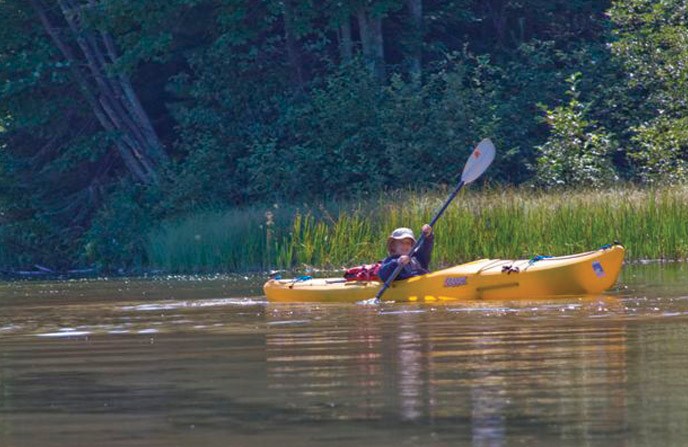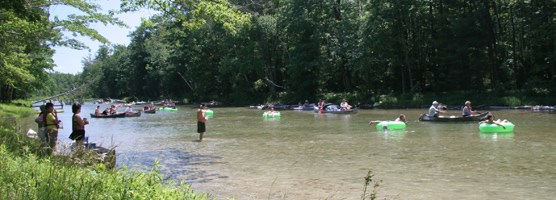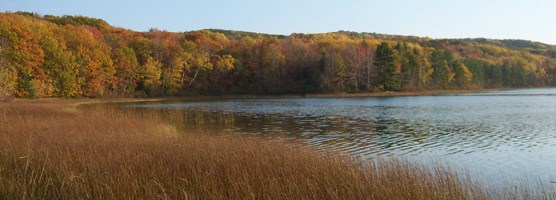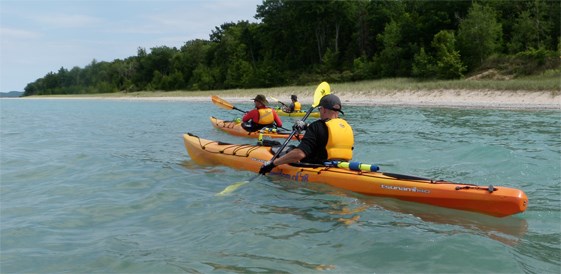
You will find a lot of water in and around the Sleeping Bear Dunes National Lakeshore. That means there are many opportunities to paddle a canoe or kayak. Bring your own boat, raft, or tube or you can rent one in the area. River Paddling Two rivers provide easy river paddling and floating. The Platte River is located in the southern part of the park, and canoes, kayaks, and tubes can be rented where the river crosses M-22. In the northern part of the park, near Glen Arbor, the Crystal River flows from Glen Lake to Lake Michigan and canoes and kayaks can be rented in Glen Arbor. Low water levels in the Crystal River can make canoeing difficult at times. You will enjoy the peaceful natural setting of the river. Look for wildflowers along the bank or a Great Blue Heron feeding in the river ahead. 
Terry Phipps 2005 Inland Lakes Inland lakes offer some of the best wildlife viewing along the lakeshore. Loon Lake is located near the Platte River in the southern part of the park. There is parking lot and lake access just off M-22. School Lake and Bass Lake are small inland lakes in the northern part of the park. The public access for School Lake is from county 669. 
Kerry Kelly 2005 Kayaking on Lake Michigan With over 35 miles of pristine sandy beaches and areas of bluffs up to 500 feet above Lake Michigan, Sleeping Bear Dunes National Lakeshore is a perfect place to kayak on the “Big Lake.” Kayaking provides a unique view of the Dunes and glacial moraine bluffs that can’t be experienced from shore. The magnitude of the bluffs and dunes and the contrasting colors of sand bracketed by blue sky and water create images that you won’t soon forget. Lake Michigan is beautiful – but unpredictable! Kayakers must be prepared for cold temperatures, high winds, fog, and rough seas that may occur at any time. Be constantly alert to changing conditions and you should consult the current marine forecast before starting any trip (NOAA 1-906-475-5212 or Marine Band Radio Channel 16). 
Phil Akers 2013 Leave a Float Plan Have Alternate Plans Clean Your Kayaks
U.S. Coast Guard Equipment Requirements In Case of Emergency
Visit our keyboard shortcuts docs for details
Be prepared. Plan like a Park Ranger. Do you know what you need to hike in the dunes? Are you aware of rip currents in Lake Michigan? |
Last updated: March 15, 2024
